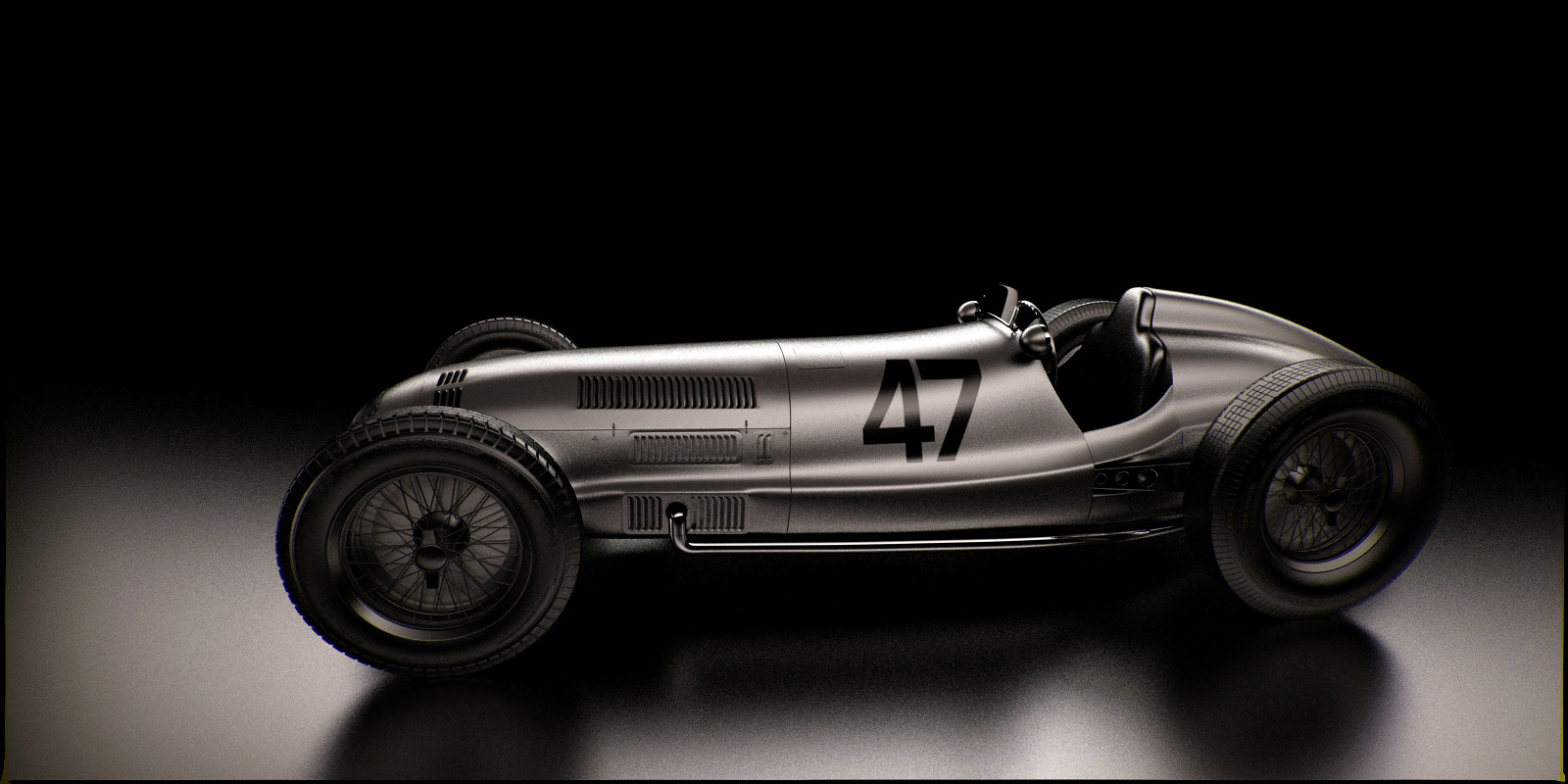The W154 represented the apogee of the supercharger era of Mercedes-Benz’s racing vehicles. Rudolf Carraciola drove a Silver Arrow to the Grand Prix world title in 1938. The car dominated again in 1939, piloted by Hermann Lang.
In January 1938 the first specimen was running on the test bench, and the first almost trouble-free test run was completed on February 7, when the engine developed 427 hp (314 kW) at 8000 rpm. In the first half of the season, drivers Caracciola, Lang, von Brauchitsch and Seaman had 430 hp (316 kW) at their disposal, towards its end more than 468 hp (344 kW). In Reims, Hermann Lang's car was fitted with the most powerful version with 474 hp (349 kW), howling down the long straights of the Champagne circuit at 283 km/h at 7500 rpm in his W 154.
The chassis was largely based on that of the preceding W125. The frame was constructed using oval tubes made of nickel-chrome molybdenum to provide a stiff chassis.
The bodywork of the W125 was aluminium metal, which like its predecessors was left unpainted in its bare silver colour. This brought Mercedes' cars during this period, including the W154, the nickname of Silver Arrows.
The suspension was also near identical to the W125. The rear consisted of De Dion tube, a non-independent suspension designed to keep the two rear wheels in parallel using a solid tubular beam. The rear also had hydraulic rear dampers, which were possible to adjust from within the cockpit during a race.
It is believed that a total of fifteen W154 were built by Mercedes-Benz. Together they scored 11 wins in 16 outings. The third chassis was never used in 1938 and 1939. The last car did race as it was part of the fruitless expedition to Argentina. Chassis 3 may have been used as a record breaker alongside chassis 11 which first served as a Grand Prix car and was later fitted with a fully enveloping body. Fitted with larger engines these machines were capable of speeds well in excess of 430 km/h. Today the presence of at least nine of the cars is known, which contrasts starkly with the very limited number of Auto Union survivors.
Chassis 189437 or 'Wagen 7' was originally built for Rudolf Caracciola's aborted Indy 500 venture. It finally made its debut in July of 1938 when Dick Seaman drove Wagen 7 to victory in the all-important German Grand Prix at the Nürburgring. The talented English driver added a second and third to the chassis' tally before the season was out. In 1939 this W154 was allocated to Hermann Lang. He won four major races that year, making Wagen 7 the winningest of all W154s constructed.
It survived the War stored away in Romania where it was subsequently retrieved by a Joska Roman, together with Wagen 15. During the 70s, it was sold through Antoine Raffaelli and eventually ended up in the hands of American Joel Finn. With the help of British experts Crosthwaite & Gardiner, he had the car restored to full running order. Today it is part of the largest privately owned Mercedes-Benz collection. The most successful of all W154s is seen here, alongside Wagen 15, at the 2009 Pebble Beach Concours d'Elegance where 75 years of the Silver Arrow was celebrated.




